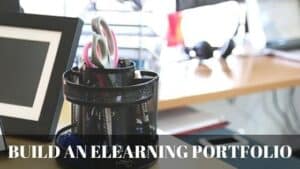Putting your finger on exactly what a personal brand is isn’t the easiest thing to do. While the brand of an organization is a complex web of people, it’s still not as complex as people. Think of all the different skills that go into making you successful at your job.
There’s a common theme I speak about in my course on what it takes to develop your personal brand. It’s always about consistency.
Staying focused and sending a consistent message from your personal brand website is a challenge that few have mastered, and it’s visible. Heck, even I haven’t mastered it, but it’s something I keep in mind regularly.
Consistency isn’t possible everywhere though. For instance, my blog posts haven’t been about a single consistent topic, but I find my blog is a more dynamic part of my website, not nearly as important to be consistent as my other pages.
Send a Consistent Message
Writing for the static parts of your website and your social media accounts should follow a very simple formula.
This is what I’ve done to build my social media accounts so they flow with my website, each offering a unique display of who I am professionally.
I first started with the most important information that sums up what I excel at in one short, concise sentence. The sentence has to be within 120 characters (yes, less than a Tweet even) because of the limitations of many social media websites. I’ve used this introduction from Twitter to LinkedIn and Pinterest to Google+.
Beyond that you must tell a more robust story of who you are, what you are good at, and what you’ve done and can do for an organization. I have used this story of my relevant career on LinkedIn and my website’s about me section.
Beyond the message you send with the writing on your social media profiles and personal brand website, other elements should be used according to the medium. This means things like portfolio items, blog posts, and links.
Use the Best Platform For the Medium
Not all your content should be available from all your social media accounts. While there will be the inevitable overlap of some of your content, this should be kept to a minimum and only on the most important stuff.
Portfolio
I’m going to use projects as an example because it’s the most obvious thing that you can’t and shouldn’t be showing everywhere.
Of course LinkedIn now gives you the opportunity to display your projects on your profile, but should you?
Yes, you should, but not as the primary place. It’s a great idea to show a few of the absolute best projects you have to show off. More than five and you might send a visitor into the deep end with too much to wade through.
LinkedIn is a great platform to show off just the few best (or most recent) you have to offer. The goal is to make sure your website is readily available on your LinkedIn profile if a visitor wants to find out more, that’s where you want them to see the extent of your expertise.
Blog
Your blog is another great example of using the best platform for the medium. You can of course now blog on LinkedIn which is great, you’re one step closer to reaching your connections on LinkedIn. The reason you still want to keep your blog primarily on your website is that it will continue to stay within your brand quality.
When you move your content into LinkedIn, it essentially becomes their content. You have given up control and cannot do what you would like with it. Searching your content is difficult, and it now comes tagged with ads and all the other baggage that LinkedIn carries with it.
Your personal brand website remains untarnished by anybody else and remains fully owned and under control of you. It is your content that you’ve put a lot of hard work into.
Here’s how I use the LinkedIn blog features to benefit my content. I post my content first on my blog after which I post it on LinkedIn. When posted to LinkedIn it still retains links back to my website if I link to another post, and at the bottom of each post I link back to the original post on my blog.
Doing this extends my audience and even brings traffic back to my website regularly, it’s a great way to make new connections and meet new people who have similar interests or possibly looking to hire somebody with your expertise.
Lay It All Out
The last thing you want a visitor to do is have to work and hunt to find what they’re looking for. Your personal brand website is the best place to create a consistent user experience where everything is easily available.
Did they find you on a search? Did they find one of your posts and loved it and want to learn more about you? Did they find you on social media but want to find out more?
All this information should be consolidated on your website, available at a visitors fingertips. No matter where a visitor finds you online (social media, search, email, etc) you should always link back to your website and have clear navigation that is obvious where each link goes.
Do they want to contact you? You need a contact page! Do they want to learn more about you? You need an about page! Do they want to see your work? You get the point. Make it easy, non-threatening, and keep it simple.
Social media sites can make all this available to your visitors, but that’s not social media’s goal. Social media’s goal is to sell advertising, get subscribers, etc. Their goal is always at odd with yours.
Pick the best stuff you have and put it on your website, then maybe add a few more things to show a cross section of your skills, but that’s it. Your writing should be clear, skim-able, and easy for a visitor to find what they’re looking for.
You don’t want to overwhelm, but at the same time you don’t want to hide those imperfections that make you human. Your blog is the perfect place to let those imperfections shine. It’ll show that you’re all about taking chances and showing who you really are and learning from those failures. Showing the bad can be just as important as showing the good. How else are you supposed to develop yourself and become the best you can be?
You Need a Website
If you have anything to show at all, whether it be ideas or physical work, you need a website if you expect to be successful and relevant in your career. Even if you’re not currently looking for a job, the market is fragile and you don’t want to be caught in a tough place. Harold Jarche proposes a question that everyone should be asking themselves: are you prepared?
Be prepared.
I explain in my course Catapult Your Career: Building Your Website Portfolio several tips to help you make the best of your personal brand website. Whether you’re a beginner to building a website or already have a WordPress website but would like to polish it up, I’ll help you prepare for a successful career.
I look forward to you joining me in my course.



